Canals, Caminos & Culture
We spent the last few days living a little like pseudo-expats. Robyn is in regular contact with Sarah via WhatsApp, and we get a lovely message from her: "minha casa e sua casa" ("my home is your home"). Each day, we drive to a nearby village to explore the surroundings. There are so many whitewashed villages within a 15km radius of the cottage. Each morning starts with Robyn making coffee for the builders, Martin, an expat Brit, and Fasil, a native Portuguese, who are on-site daily. We ask Martin about a tip the Uber driver gave us about a nearby restaurant (yes, the same Uber driver who was surprised we were going to stay up here). "A Tia Bia," says Martin, "absolutely, great food and very cheap." We make a day of it, visiting several villages along the way; one, Salir, has the ruins of a thousand-year-old castle. A museum with a glass floor has been built over the top of the ruins, which have become an archaeological site. There is an array of pottery and other artifacts spanning the thousand-year history of the site on display in the museum.
Chris Maher
23 chapters
20 Aug 2024
Loule Part 2: Minha Casa e Sua Casa
October 31, 2024
|
Loule
We spent the last few days living a little like pseudo-expats. Robyn is in regular contact with Sarah via WhatsApp, and we get a lovely message from her: "minha casa e sua casa" ("my home is your home"). Each day, we drive to a nearby village to explore the surroundings. There are so many whitewashed villages within a 15km radius of the cottage. Each morning starts with Robyn making coffee for the builders, Martin, an expat Brit, and Fasil, a native Portuguese, who are on-site daily. We ask Martin about a tip the Uber driver gave us about a nearby restaurant (yes, the same Uber driver who was surprised we were going to stay up here). "A Tia Bia," says Martin, "absolutely, great food and very cheap." We make a day of it, visiting several villages along the way; one, Salir, has the ruins of a thousand-year-old castle. A museum with a glass floor has been built over the top of the ruins, which have become an archaeological site. There is an array of pottery and other artifacts spanning the thousand-year history of the site on display in the museum.
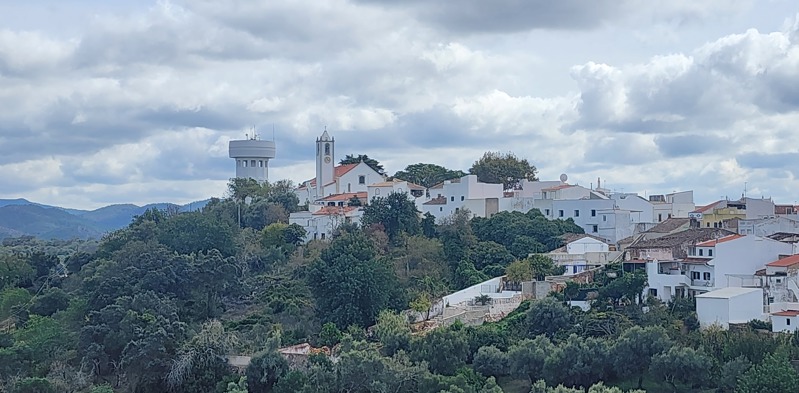
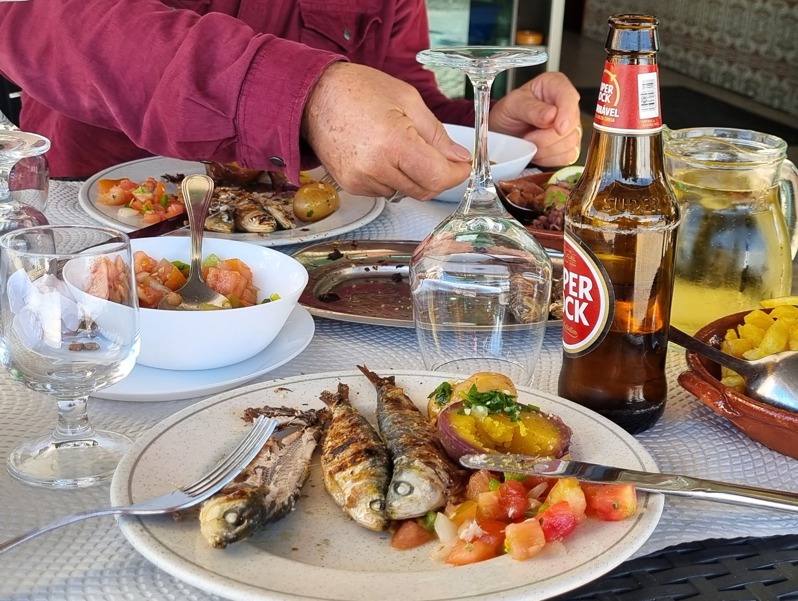
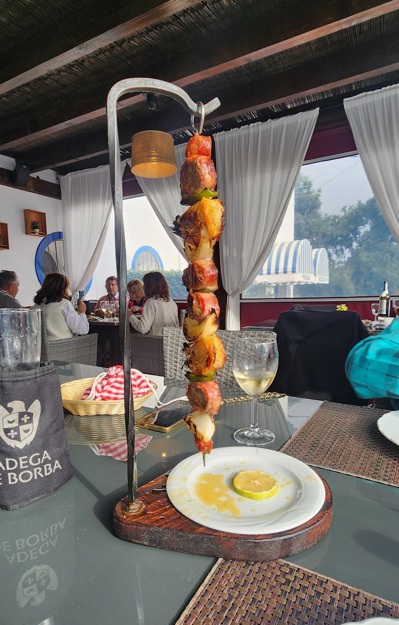
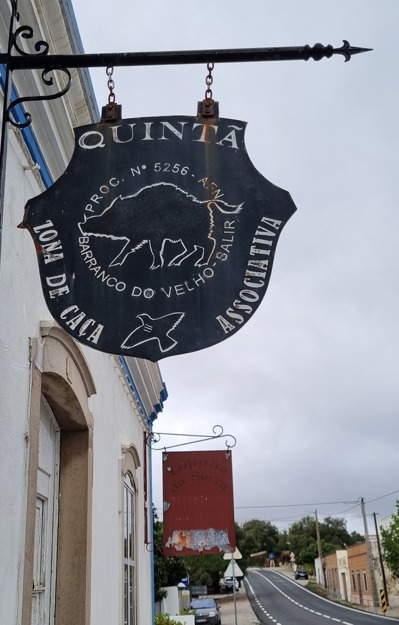
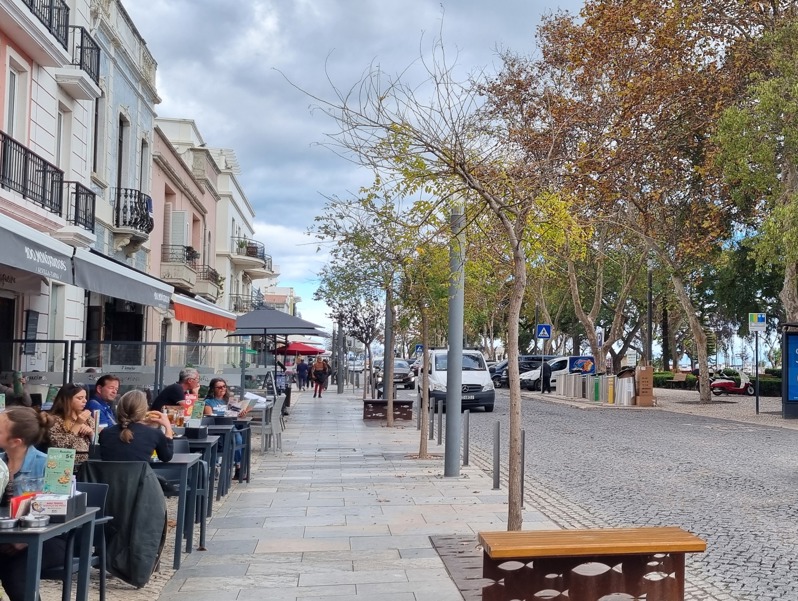


We arrive at A Tia Bia at 12:30 pm for lunch. It’s situated on a T-junction, not particularly close to any of the villages but rather about 10 to 15 km from any one of the villages in any direction. There is a building opposite the restaurant, which seems to be a carpentry shop, but nothing else. This is a relatively remote restaurant, so we are surprised to see the car park full with about 20 vehicles.
The restaurant itself has two dining rooms and a bar. One dining room is full, and we are seated in the other, about 80% full. There are lots of small family groups dining here. The menu is extraordinary and includes quail, partridge, wild boar, and rooster stew, to name a few. We order stuffed mushrooms to start, then share the deer stew with plums and rosemary. We finish with pears stewed in port with ice cream, espresso coffee, and Licor Beirão (a Portuguese liqueur made from secret ingredients). Our meal is extraordinary, but we suffer food envy watching the staff bring out dishes for other diners. The meal was so good, so cheap, and our food envy so intense that we book again for Friday as we pay.
Our home away from home is in the Algarve region, most of which hugs the North Atlantic coast with an abundance of fishing villages and a strong seafood cuisine culture. We explored some of the coast in the first half of our stay here, and in the second part, we have a day out exploring the coast from Faro to Olhão, where we have lunch. On arriving in Olhão, we hit the seafood market but get there just as it’s closing. We ask one of the workers there where the best place for seafood would be. "O Bote," he says.
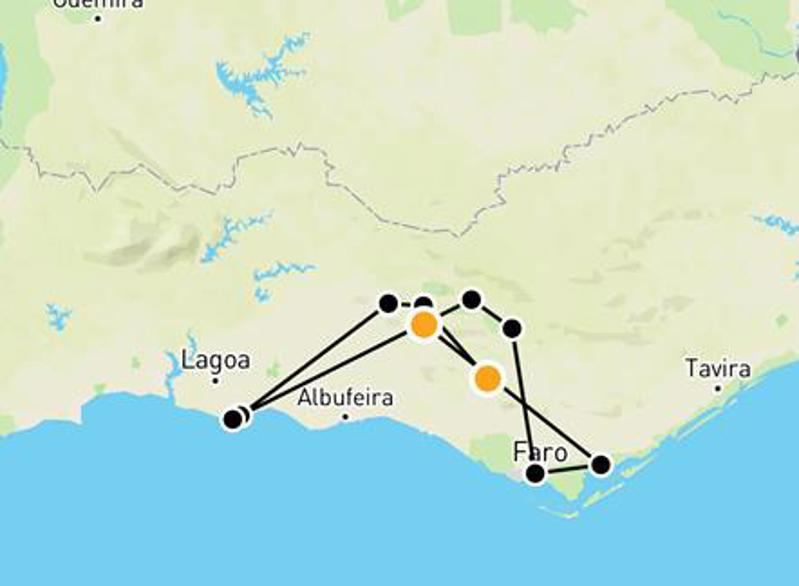
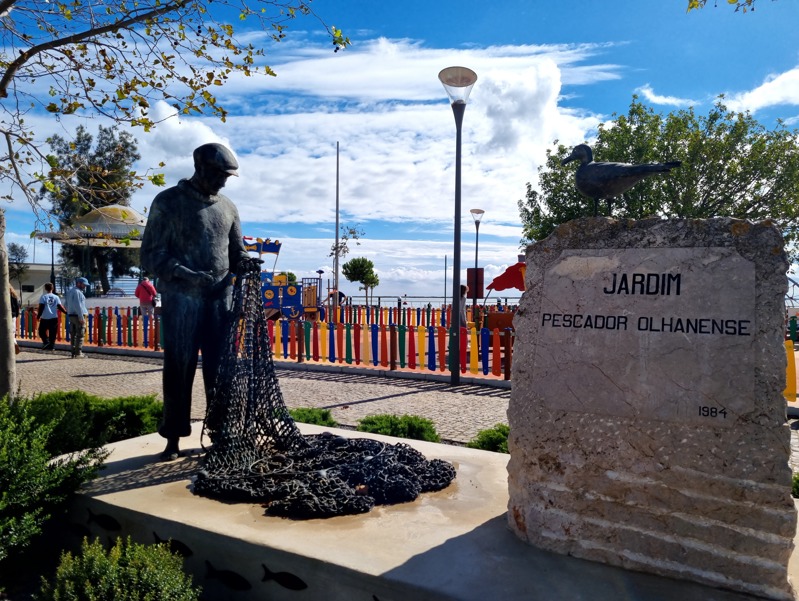
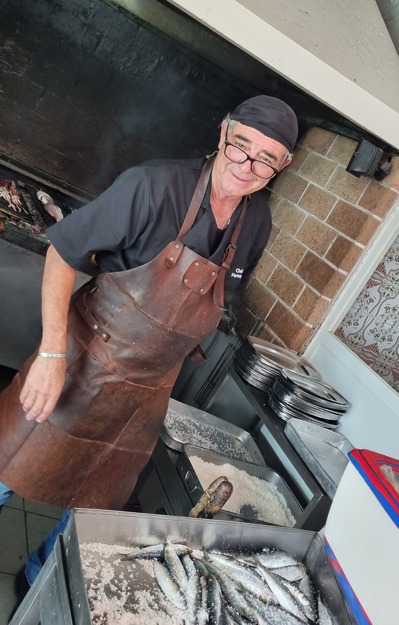
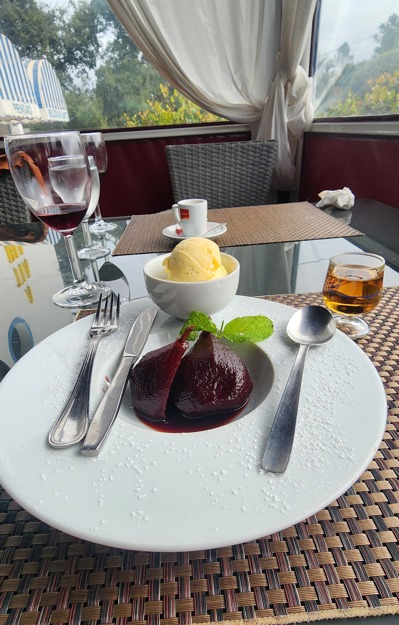
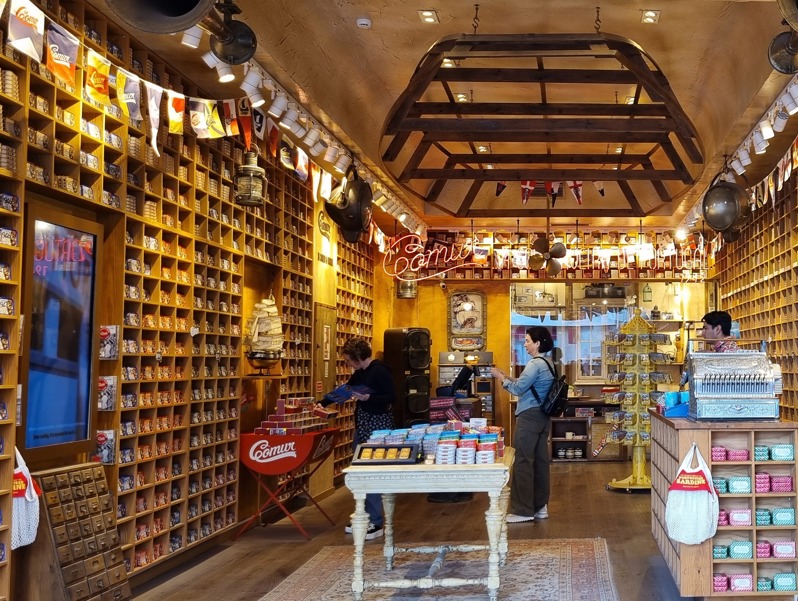

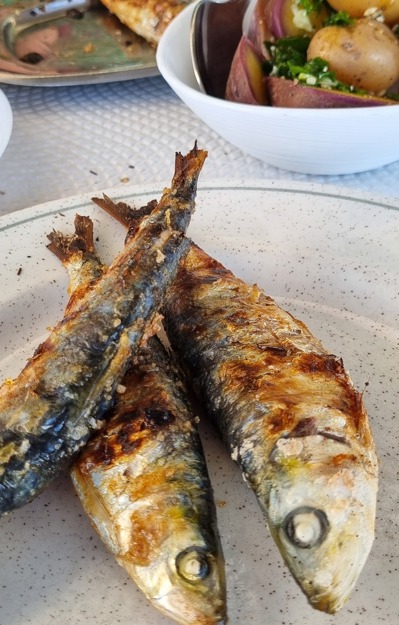
Luckily it’s just across the road. On arriving, we are thrilled to see they have a wood-fired grill just inside the door. We're in luck. Straight away, we order sardines and Vinho Verde. It’s every bit as good as those we had in Porto. We follow up with a plate of grilled baby squid.
After a week of driving, we've finally gotten used to roundabouts in the opposite direction. It’s been such a treat to have access to a vehicle to go off exploring the local villages. I have realized that I am probably the only person in the region who pays attention to speed limits.
On the last day of our holiday within the holiday, we did some housework in our little casa before heading into Loulé for one last exploration and coffee in a famous café, along with a Loulé specialty pastry. Then we
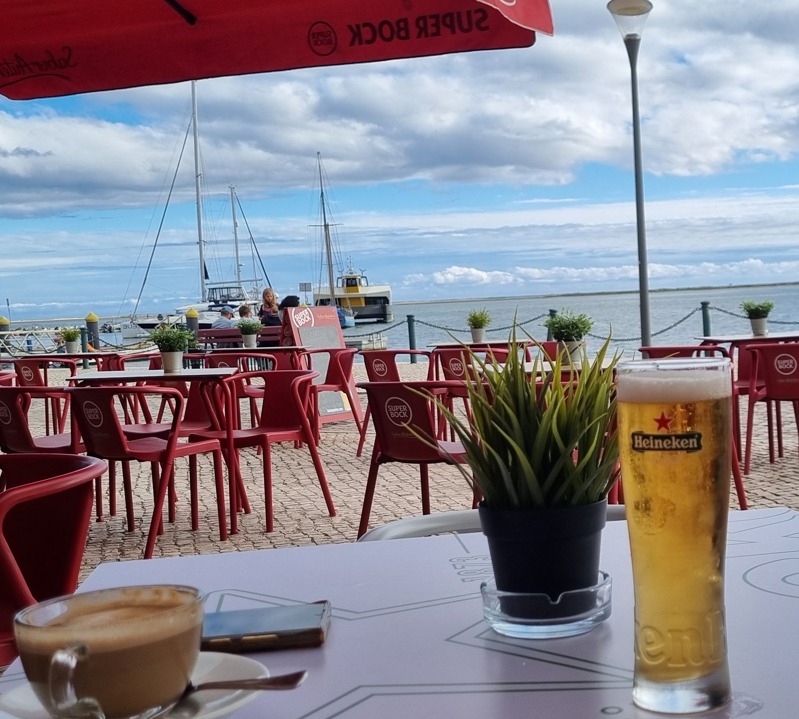
headed back to "A Tia Bia" to satisfy the food envy we developed on our last visit on Tuesday. We order the black pork kebab with a carafe of Vinho Verde (we’ve taken a liking to the stuff). The skewer is brought to the table hanging from an iron hook fixed to a wooden base, so that the skewer is suspended over a plate that sits on the wooden base. It’s visually sensational and tastes as good as it looks. We finish with the pears in port, ice cream, espressos, and a shot of Licor Beirão… food envy satiated.
As we pull into the driveway of the casa after returning from our final outing, we breathe a sigh of relief that we have returned the car undamaged. Tomorrow, we have an early start to get to the bus station for our 10 am departure. While we are ending our time in Espargal, we see the devastation that is happening in Valencia, Spain. While we are headed to Seville, which is not impacted, the loss of Spanish life weighs heavily.
Next stop: Seville, Spain…
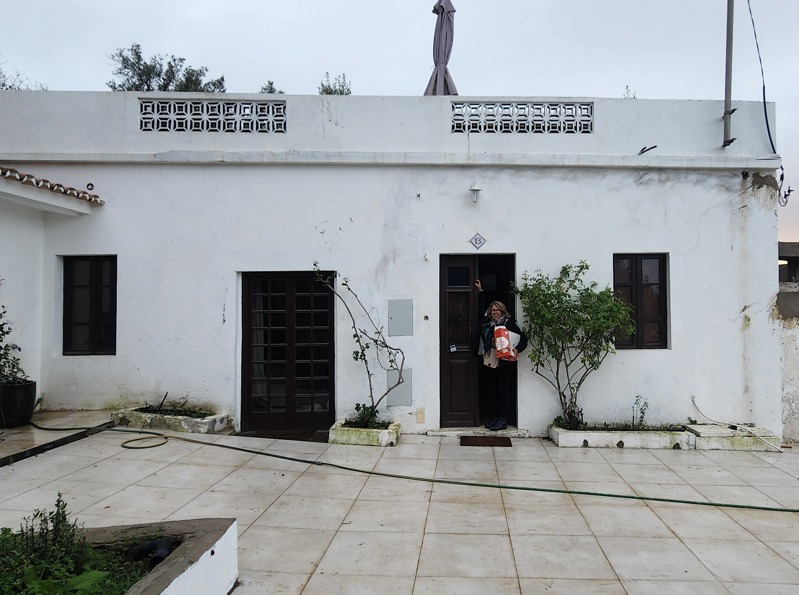
1.
Swept out of Broome
2.
To Toulouse
3.
Two Let Loose in Toulouse
4.
Cahors Calls: The Pilgrams Answer
5.
Le Puy Camino: Pilgrims Depart
6.
Marnhac to Montcuq: The Long Walk
7.
Montcuq to Lauzerte: Hitting our Stride
8.
Lauzerte to Durfort-Lacapelette: The Penultimate Leg
9.
Malbec in Moissac: The Tradition Continues
10.
Moissac to Carcassonne: Enroute to the Canal du Midi
11.
Oui Captain: The Canal du Midi
12.
64 Reasons to Love the Canal du Midi
13.
The Captainerie, Gendamerie and the Stolen Phone
14.
Pente d'Eau de Fonseranes: The Last Leg
15.
Beziers: Our Last Days in France
16.
Port in Porto: It's a Tradition
17.
Lisboa: The Home of Fado and Azulejos.
18.
Loule: The Holiday within the Holiday.
19.
Loule Part 2: Minha Casa e Sua Casa
20.
Spain: Hola Amigos
21.
Holy Toledo
22.
Last Stop Madrid: Au Revoir, Adeus, Adios.
23.
That's a Wrap
Share your travel adventures like this!
Create your own travel blog in one step
Share with friends and family to follow your journey
Easy set up, no technical knowledge needed and unlimited storage!